Publications, Reviews, Birds
Publications
My contributor's copy of A Sea of Alone: Poems for Alfred Hitchcock has arrived, with my poem "Far From the Pleasure Garden":
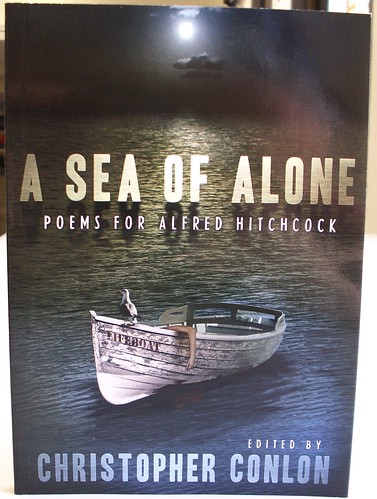
Watch this space for ordering info.
I now also have copies of Open Laboratory 2010: The Best of Science Writing on the Web in hand, with my sonnets "Manipulations" and "In Development":

My To-Do list includes submitting to Open Lab 2011. Check out the most recent "submissions so far" list with links to the original articles. After five years of being self-published, Open Lab will now be brought to you by Scientific American Books, an imprint of Farrar, Straus and Giroux (more info here). Congratulations to series editor Bora Zivkovic and to all involved!
Beautiful illos by Paula Friedlander and Tim Mullins will accompany my poem "The Last Dragon Slayer," forthcoming in Mythic Delirium #24. Preview the art here.
The WyoPoets Newsletter has reprinted my article "Social Networking and the Found Poem" in its April 2011 issue. Another reprint, "The Many Shades of Dark Poetry," is slated for July. Both originally appeared in Of Poets And Poetry, the newsletter of the Florida State Poets Association.
Reviews
Back in March (discovered by me in April), Bard Bloom posted this review of Covenant and inspired a discussion that made my day. Writes Bloom, "I give this one an enthusiastic recommendation. Interesting characters, interesting moral quandary, and lots of responses to it. I was expecting one of two easy answers, but Malcohn quite bravely avoided them both."
A new review of She Nailed A Stake Through His Head: Tales of Biblical Terror has appeared at Shock Totem. Writes John Boden, "Take a measure of Mad Max futurism and mix liberally with prophets, the damned, and revenge and you have Elissa Malcohn’s, 'Judgment at Naioth.'"
Birds
Closer to home, the ibises are back in town:
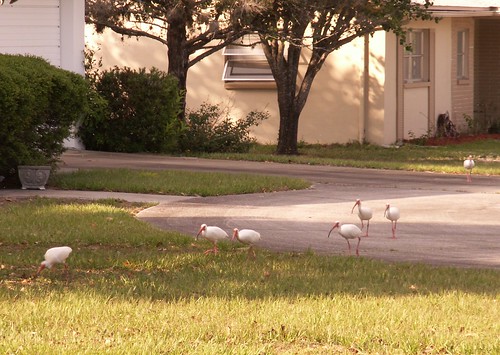
Eudocimus albus, Family Threskiornithidae. Says eNature, "Around their colonies, ibises eat crabs and crayfish, which in turn devour quantities of fish eggs. By keeping down the numbers of crayfish, the birds help increase fish populations. In addition, their droppings fertilize the water, greatly increasing the growth of plankton, the basic food of all marsh life. White Ibises gather at dusk in spectacular roosts, long lines of birds streaming in from all directions."
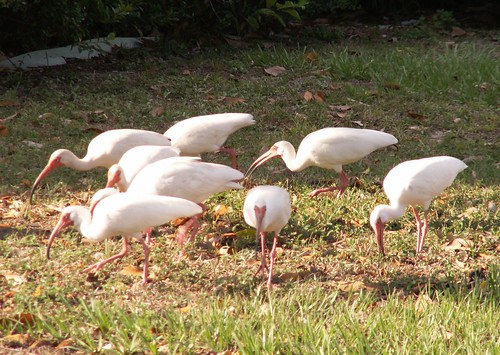
I spotted this peahen moseying around our local strip mall:

Genus Pavo, likely Pavo cristatus (India blue peafowl). According to United Peafowl Association, "Peafowl are native to India, Burma, Java. Ceylon [Sri Lanka], Malaya. and Congo. Peafowl are relatives of pheasants. The main difference between peafowl and pheasants is in the plumage. Peafowl are very hardy birds and with proper care, can live forty to fifty years. The term 'peafowl' refers to the species name. The male is called the peacock and the female is called the peahen. Offspring under the age of one year are called peachicks."
Mary and I subsequently learned that several peafowl are in the area. This individual seemed relatively comfortable around humans, and actually walked toward me as I took this next shot.
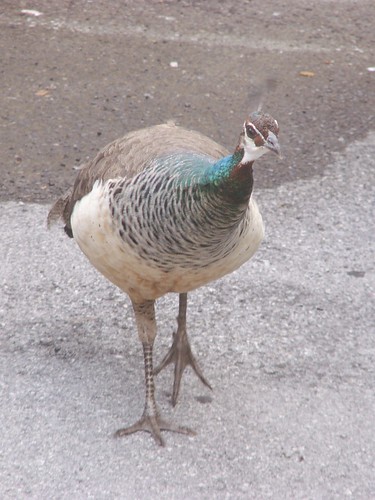

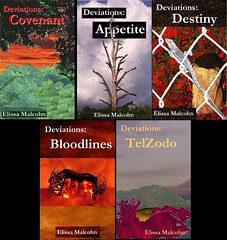
Free downloads at the Deviations website, Smashwords, and Manybooks.
Proud participant, Operation E-Book Drop (provides free e-books to personnel serving overseas. Logo from the imagination and graphic artistry of K.A. M'Lady & P.M. Dittman); Books For Soldiers (ships books and more to deployed military members of the U.. armed forces); and Shadow Forest Authors (a fellowship of authors and supporters for charity, with a focus on literacy).


0 Comments:
Post a Comment
<< Home